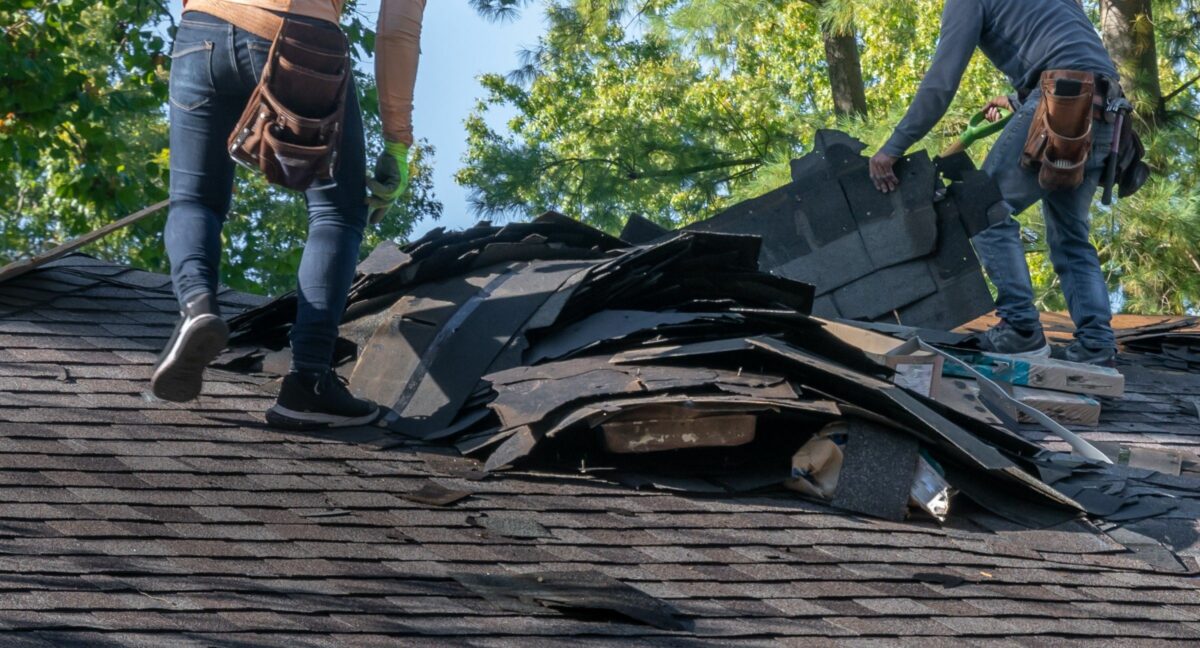Mon-Sat: 7:00am to 6:00pm

How to Handle Emergency Roof Repairs in San Diego
San Diego weather is relatively stable and pleasant, but that doesn’t mean homeowners are immune from the whipping Santa Ana winds and even rare weather events like heavy storms, which can wreak havoc on your roof. To prevent costly damage, every homeowner should know how to handle emergency roof repairs. Here’s what your emergency roof repair strategy should look like.
What Constitutes a “Roof Emergency?”
A roof emergency is any situation with sudden and significant damage to your roof that requires immediate attention to prevent further damage or safety hazards. Here are a few examples:
Severe Storm Damage: When high winds or heavy rainfall cause leaks, loosen shingles, or cause structural damage.
Leaking Roof: If you experience a roof leak that causes water to enter your home, especially during heavy rain or a sudden downpour.
Tree or Debris Impact: When a tree, large branch, or other debris falls onto your roof, causing visible damage.
Fire Damage: In the unfortunate event of a fire, immediate repairs may be necessary to secure your home.
Structural Damage: Any damage to the structural integrity of your roof, such as sagging or a collapse, poses an immediate danger and requires emergency attention.
Wildlife Intrusion: Wildlife or rodents have invaded your roof, causing damage or entering your home.
Safety Hazard: Any situation where your roof poses a safety hazard to you, your family, or others, such as loose roofing materials or exposed electrical wiring.
How to Handle Emergency Roof Repair Situations
Neglecting emergency roof repairs in San Diego can have severe and costly consequences. Inaction can cause water intrusion, leading to structural damage, mold, and damaged insulation, which can escalate repair costs.
In an emergency roof repair situation, take the following steps:
Safety First: Before anything, be safe. If there are any immediate safety concerns, such as a risk of structural collapse or electrical hazards, evacuate the affected area and call 911 if necessary.
Inspect Damage: Before hiring an emergency roofer, examine your home for damage, including:
- Brown Spots: Brown spots, especially those larger than an orange, indicate that you have a roof leak and it’s time to call a roofer.
- Missing Shingles: Missing or damaged shingles and signs of erosion require prompt attention.
- Visible Light: Seeing light through the roof boards in an unfinished attic clearly indicates that your roof needs attention.
- Leaking: Contact a professional immediately if water is gushing into your home.
- Unexplained Energy Bill Hikes: If your energy bills are somehow too high, you’re probably not experiencing an emergency. However, your home’s insulation and sealing have likely been compromised.
Document Damage: We do not recommend climbing on your damaged roof to assess the damage—especially during severe weather. However, take photos of immediately accessible areas where you spot damage and document what you believe to be the extent of the damage.
Call in Professionals: Next, call a licensed roofing contractor or roofing emergency service. Explain the situation and provide details about the damage.
Contact Your Insurance Company: Notify your homeowner’s insurance company about the emergency roof repair situation. Provide them with the documentation and details they may require for your claim.
Contact the Emergency Roof Repair Experts
Are you facing a roofing crisis in San Diego? Our experienced team is here to help! Ascent Roofing is your trusted local choice for handling emergency roof repairs promptly and professionally. Contact us now to ensure your roof gets the care it deserves.
Share this Post


